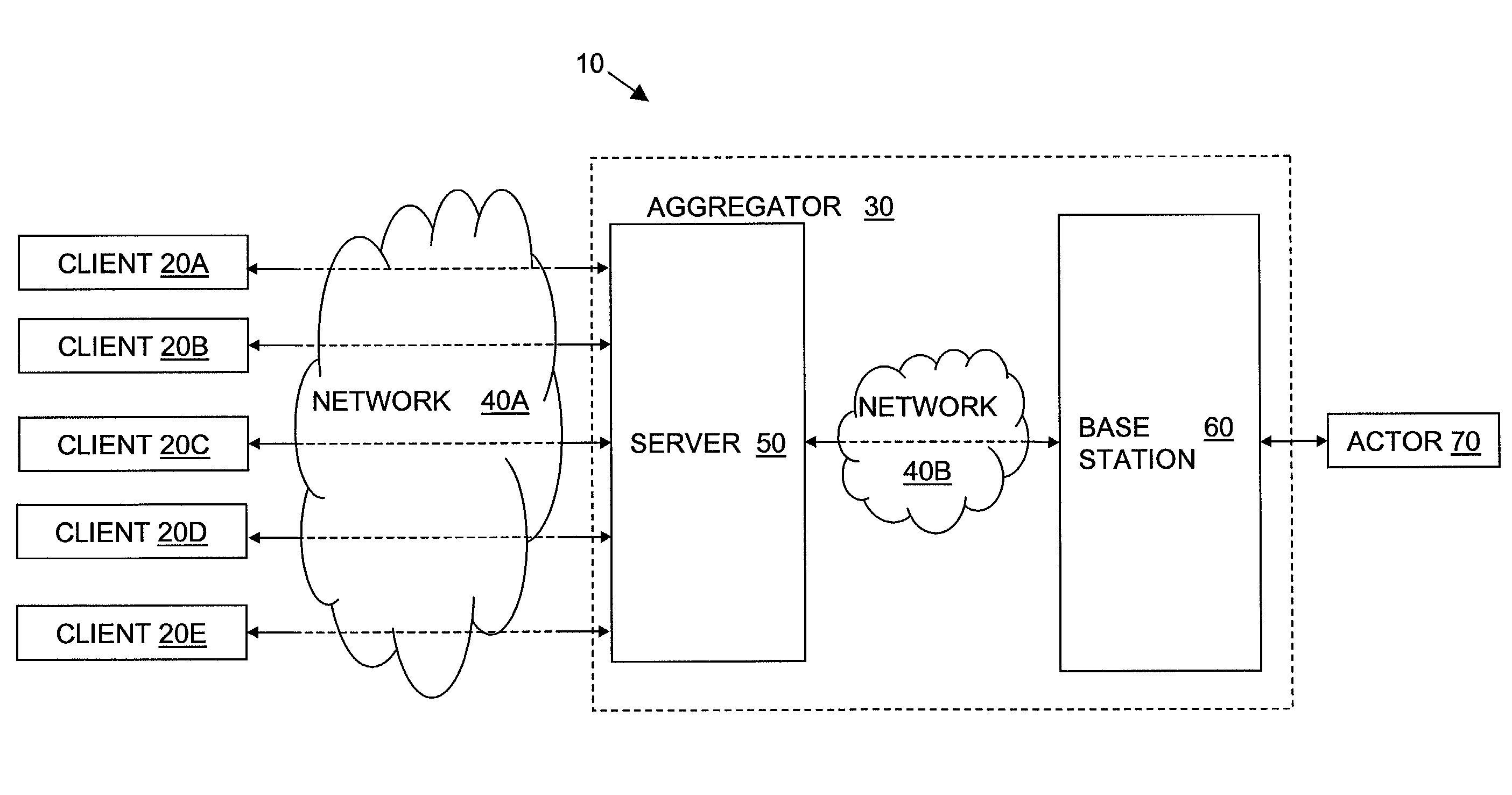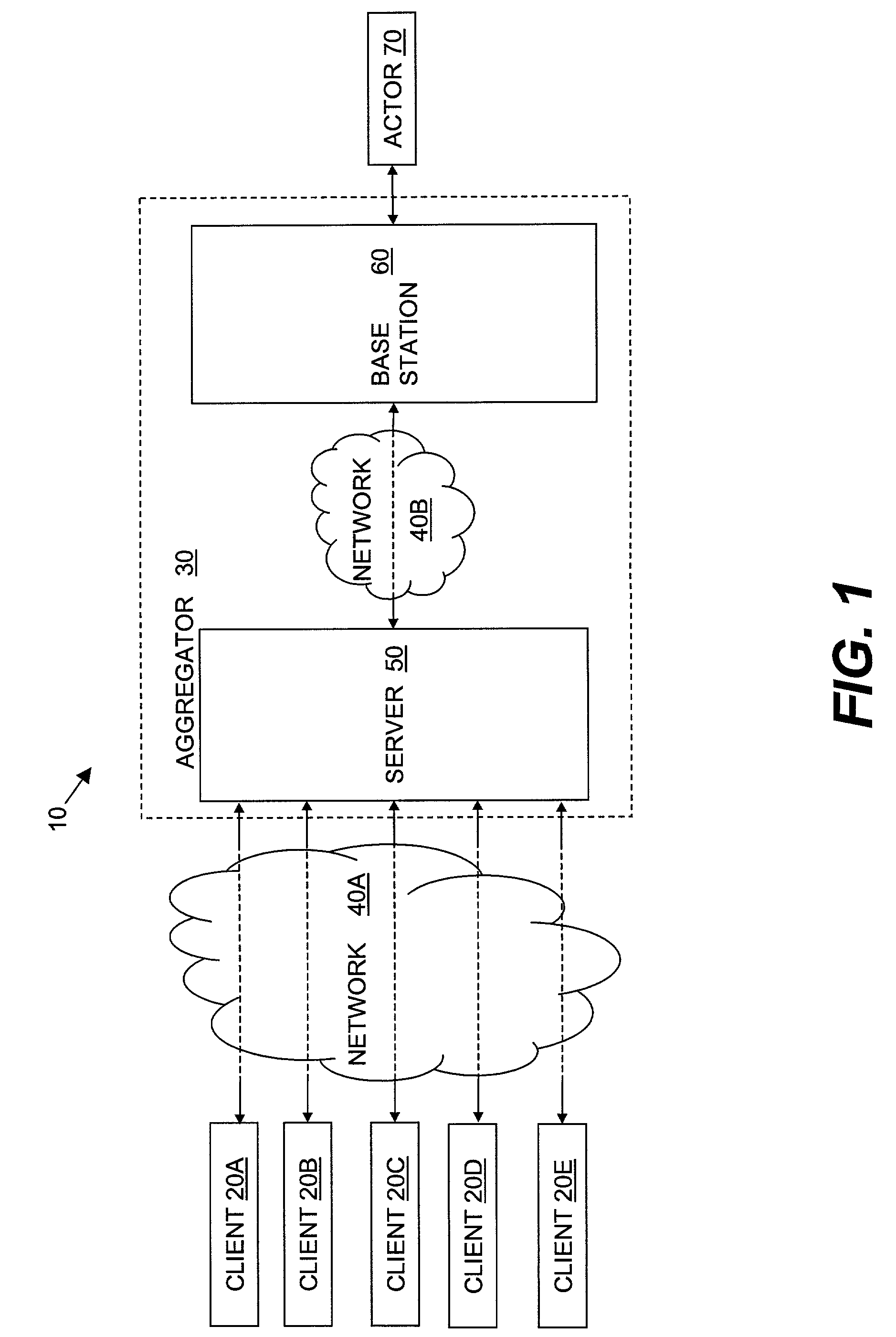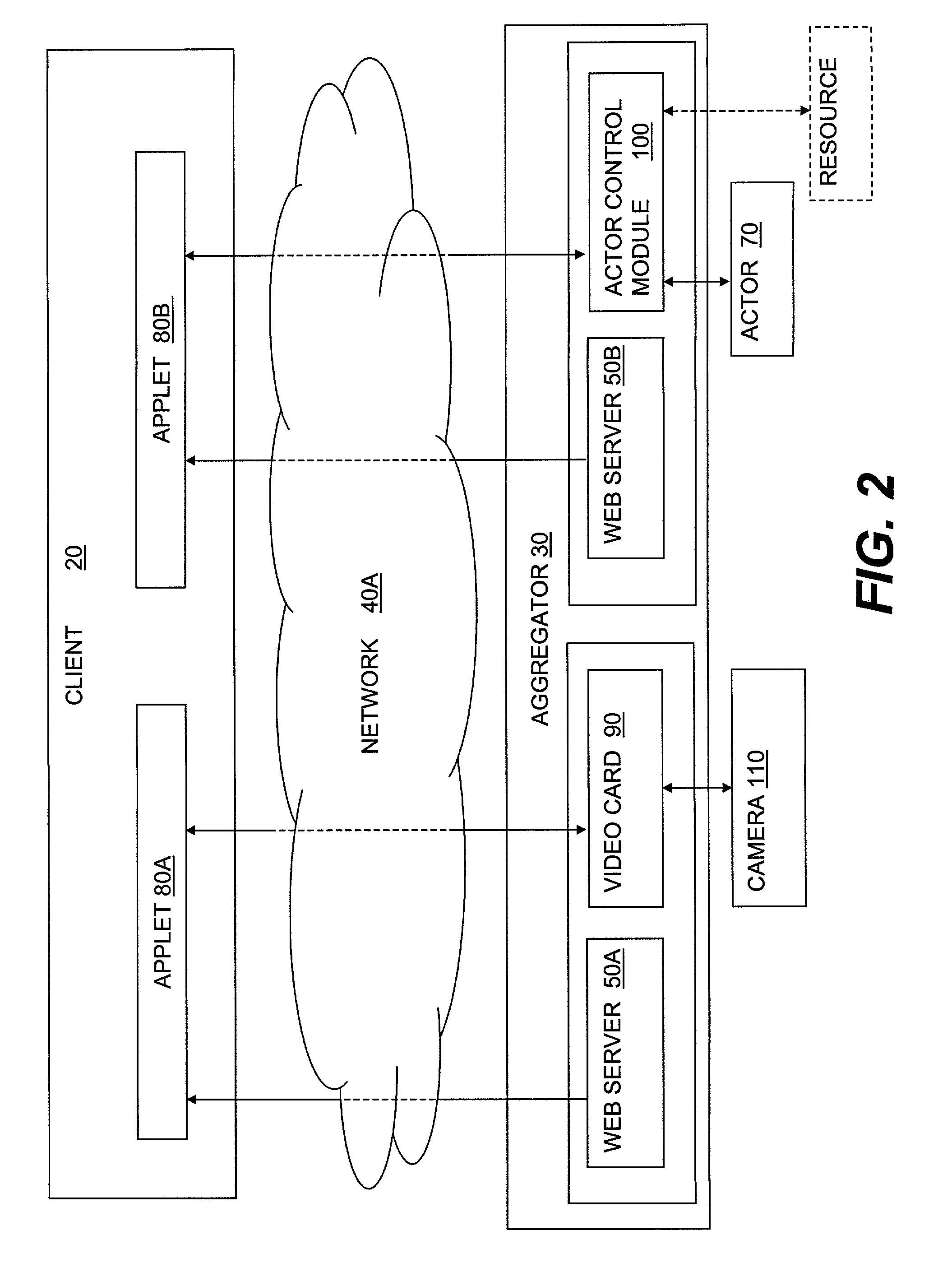Remote collaborative control and direction
a collaborative control and remote control technology, applied in the field of remote control of activities, can solve the problems of inability to determine the action the audience sees, in real time, and little opportunity for direct interaction with the audience, and achieve the effect of facilitating interaction
- Summary
- Abstract
- Description
- Claims
- Application Information
AI Technical Summary
Benefits of technology
Problems solved by technology
Method used
Image
Examples
Embodiment Construction
[0016]With reference to FIG. 1, a system 10 for facilitating remote participation in an activity monitorable by an audience includes a series of clients 20A, 20B, 20C, 20D, 20E (referred to generally as client 20) in communication with an aggregator 30 through a first network 40A. An aggregator 30 can include a server 50 in communication with a base station 60 through a second network 40B. Alternatively, the server 50 and the base station 60 can be a single computer. The aggregator 30, or alternatively the base station 60, is in communication with an actor 70 or a controllable resource. Networks 40A, 40B may be, for example, different computer or telecommunications networks or the Internet.
[0017]In one embodiment, the server 50 can be a computer including an AMD K7 950 MHz processor with 1.2 gigabytes of memory connected to a 100 megabytes per second T3 line. The base station 60 can be a Dell laptop computer including a Pentium III 600 MHz processor with 64 megabytes of memory conne...
PUM
 Login to View More
Login to View More Abstract
Description
Claims
Application Information
 Login to View More
Login to View More - R&D
- Intellectual Property
- Life Sciences
- Materials
- Tech Scout
- Unparalleled Data Quality
- Higher Quality Content
- 60% Fewer Hallucinations
Browse by: Latest US Patents, China's latest patents, Technical Efficacy Thesaurus, Application Domain, Technology Topic, Popular Technical Reports.
© 2025 PatSnap. All rights reserved.Legal|Privacy policy|Modern Slavery Act Transparency Statement|Sitemap|About US| Contact US: help@patsnap.com



